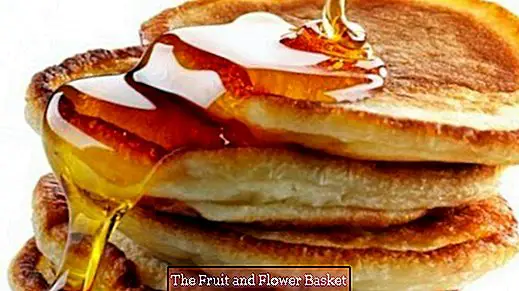The maple syrup
As many of you know, I lived in Canada for a while. Although I was missing one or two German foods during this time, you also learn the new "foreign" ones? Food very much appreciated. So also the notorious for Canada maple syrup.
Everything worth knowing about one of the oldest natural products you can now learn.
Origin and history
With 90% Canada is the main production source of maple syrup.
The discovery of the natural sweetener tells a variety of stories. What all stories have in common, however, is the fact that the Indians were involved in the discovery of the syrup. The fact is that hardly anything has changed in the process for obtaining maple syrup to this day.
Obtaining the syrup
In the spring transformed The starch stored in the roots of the maple tree turns into sugar. Once this is done, the maple tree can be tapped for a limited period of time.
At the Tap thin holes are drilled in the trunk. In the holes then taps are rotated, from which the sap can flow either in pails or via hoses directly into a collection container. Now the juice has to be processed within 24 hours.
In the processing The sap is boiled in a sugar house, filtered and finally bottled. By repeatedly boiling the liquid juice is thickened to a syrup.
taste
Depending on the time at which the sap is harvested from the maple tree, both the taste and the color of the syrup differ.
Here, the earlier the juice is harvested, the brighter and milder the syrup and the less unacceptable ingredients are contained. As the juice matures, the syrup becomes darker and stronger in taste.
In Europe, the maple syrup is divided into the following categories:
AA (extra light) to D (dark)
use
In addition to the classic use of maple syrup to pancakes its use is possible wherever else the honey is used. That Dressings, marinades and desserts can be flavored by a small dash of maple syrup. The maple syrup is also ideal for new cooking experiments.
storage
Due to its high sugar content, the danger that the maple syrup degenerates does not exist. However, it should always be ensured that the bottle is properly closed.
Did you also know that
- the maple tree must be at least 40 years old before the first syrup can be extracted from it.
- The maple tree may only be tapped in the period from late February to early April. After this time, a substance is formed which makes the syrup inedible.
- the maple syrup, although it is a natural sweetener, has a sugar content of over 60%. Despite its high sugar content, it still remains the "healthier"? Alternative to commercial sugar, since it contains in addition to the sugar still beneficial nutrients such as potassium, magnesium and iron, which are missing the commercial sugar.
- the price for the maple syrup, which is not exactly cheap, is quite justified considering that only a liter of syrup can be obtained from the maximum quantity of 40 liters of sap that may be tapped out of a maple tree within a harvesting season.
Do not you think, after all the information, that maple syrup is a precious natural resource?
Anyway, for me, I'm a big fan of the natural sweetener. And pancakes without maple syrup are far from conceivable in our home anyway.





